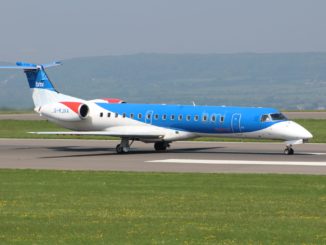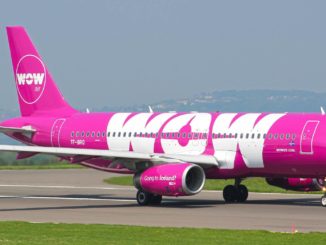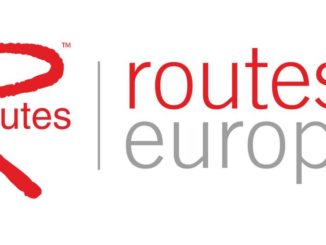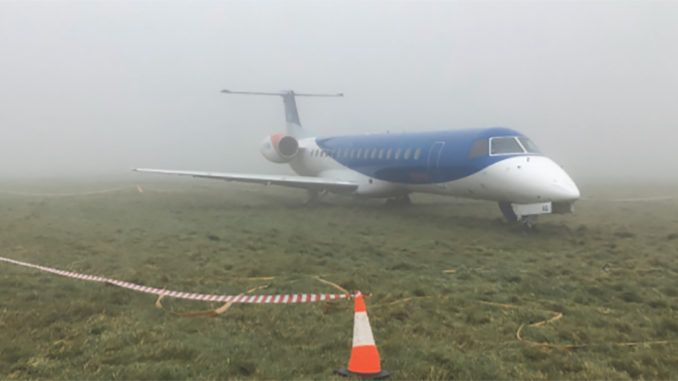
The selection of the parking brake lever rather than the speed brake lever caused a BMI Regional Embraer ERJ 145 to come off the runway at Bristol Airport (BRS/EGGD) in 2017 according to the formal accident report.
The incident happened at 11:37hrs on 22nd December 2017 as the Embraer Regional Jet, G-CKAG, was landing on runway 27 at Bristol Airport.
During the approach, rather than arming the speed brakes, sometimes referred to as spoilers, the parking brake was armed. The Air Accident Investigations Branch (AAIB) report noted that the levers were of a similar shape.
The
The crew initially noted that the de-rotation of the aircraft on landing was faster than normal, this is because the brakes were effectively locked on. Shortly after touchdown at around 400m the tyres on both main
The report suggests that the pilot attempted to use forward thrust as a way of directing the aircraft although
The aircraft eventually came to rest on the grass next to the Foxtrot taxiway.
The aircraft suffered damage to its left main landing gear fairing strut broken as well as damage to the wheel rims and tyres. Noone on-board the aircraft was injured in the accident.
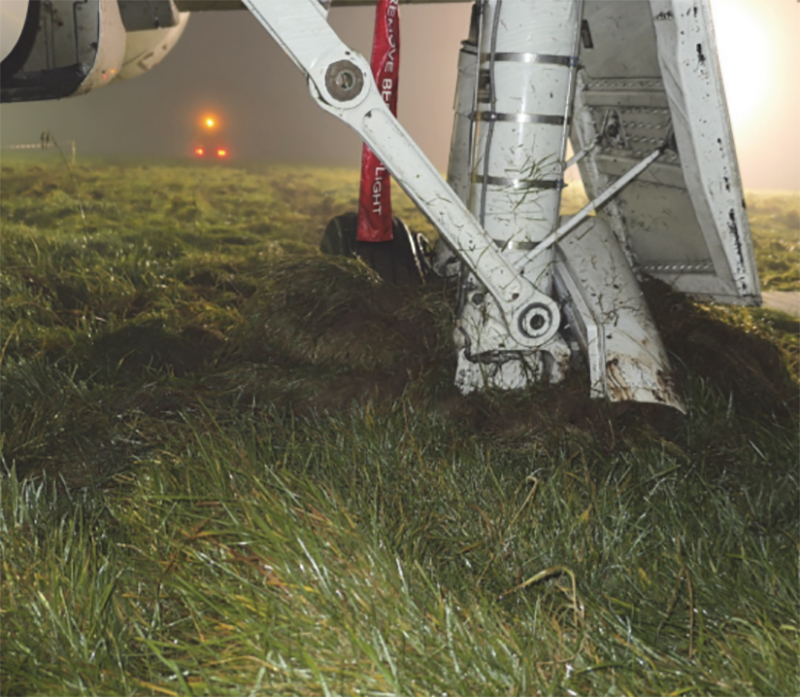
In thier report, the AAIB said: “The accident arose as a result of the inadvertent selection of the Emergency/Parking brake instead of the speed brake. The levers are of similar shape and sited close to each other but with a different appearance and mode of action. There is also a brake on indicator light. These risk controls proved ineffective in preventing the inadvertent selection of the Emergency/parking brake both on this occasion and on at least two previous occasions. Once the parking brake had been set there were opportunities to detect and correct the error, but a busy flight deck environment together with a high workload contributed to it going unnoticed.”
“After touchdown, the aircraft may have remained on the runway surface but for the addition of
The airline has since reviewed its procedures for the aircraft.


